
I help gardeners grow
& beginners blossom.
No seed left behind,
no soil unturned.
Together we can have lots of fun growing
great gardens using simple practical tips.
- Featured in -





Start saving & storing your garden seeds for a more more sustainable future
SIGN UP to get the FREE Seed packet PDF
X CLOSE
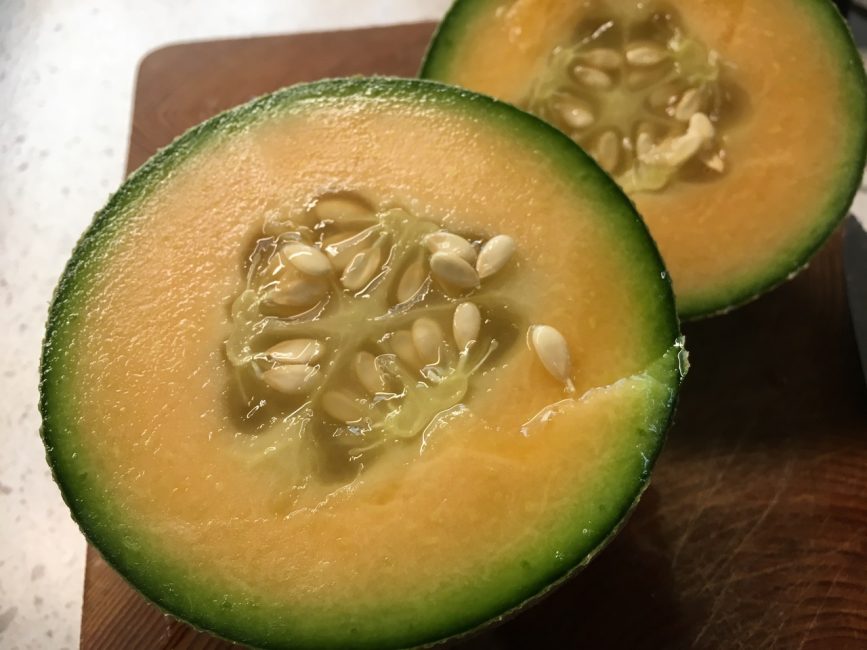
How to Grow and Harvest Cantaloupes
When To Harvest Cantaloupes – Hint: It’s not about size
I pick around and avoid the cantaloupes in fruit salads at restaurants. They are simply hard, tasteless, empty calories in my mind. But then I tasted home-grown. More specifically French-style home-grown. And suddenly it was all worth trying to grow melons again.
So I held the huge melon in my hand after I won a “Best in Show” ribbon for my giant Goddess melon this summer. And then I tossed the melon into the compost bin.
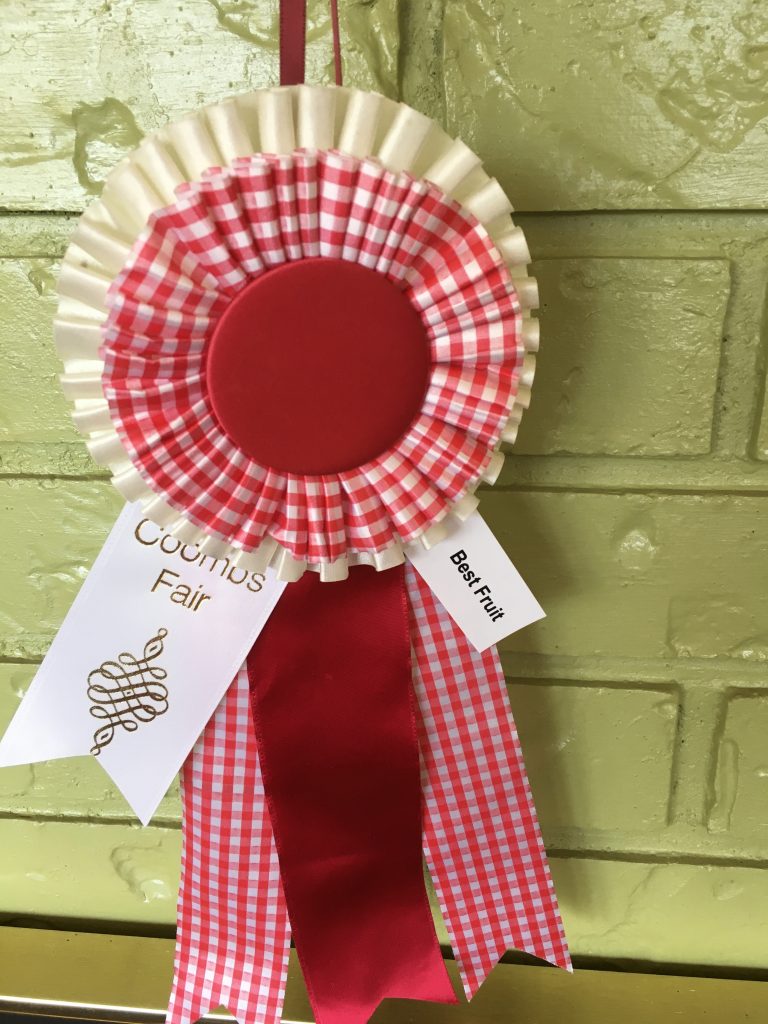 My Goddess cantaloupe was best in show but not good enough to eat. I had to compost the first Goddess melon harvested on August 4th 70 days after it was transplanted outdoors.[/caption]
My Goddess cantaloupe was best in show but not good enough to eat. I had to compost the first Goddess melon harvested on August 4th 70 days after it was transplanted outdoors.[/caption]
It was big but it just wasn’t ripe. And the real reason I don’t buy and eat store-bought melons is that they are never fully vine ripe so they are bland. So after composting the “almost ripe” winning melon I looked it up, again. I needed to remind myself what clues you get that a melon is ripe before you slice into it.
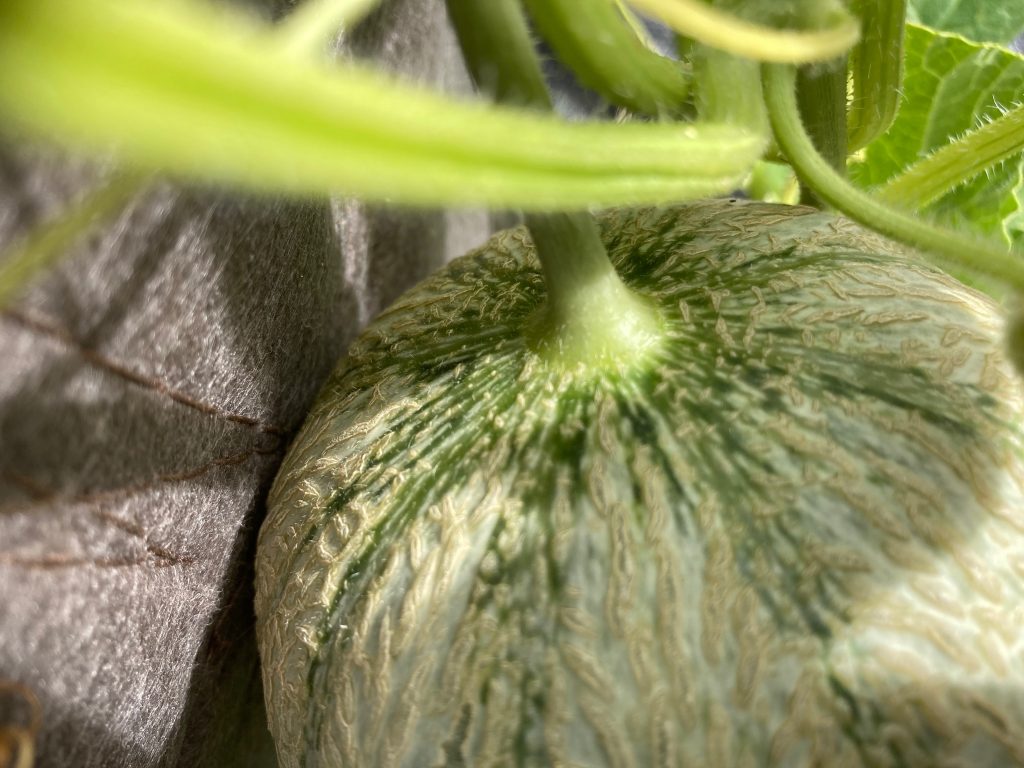 The point of attachment for this melon is still green and firm indicating it is not ripe yet[/caption]
The point of attachment for this melon is still green and firm indicating it is not ripe yet[/caption]
And since I never trust what I read I also picked several unripe melons just to be sure I was getting it right.
Melons will not continue to ripen fully once picked so it is important to pick them when they are really ripe and not a week before. Also, in Canada, there is only time to produce 3-4 melons per plant per year so anything picked unripe is a wasted melon.
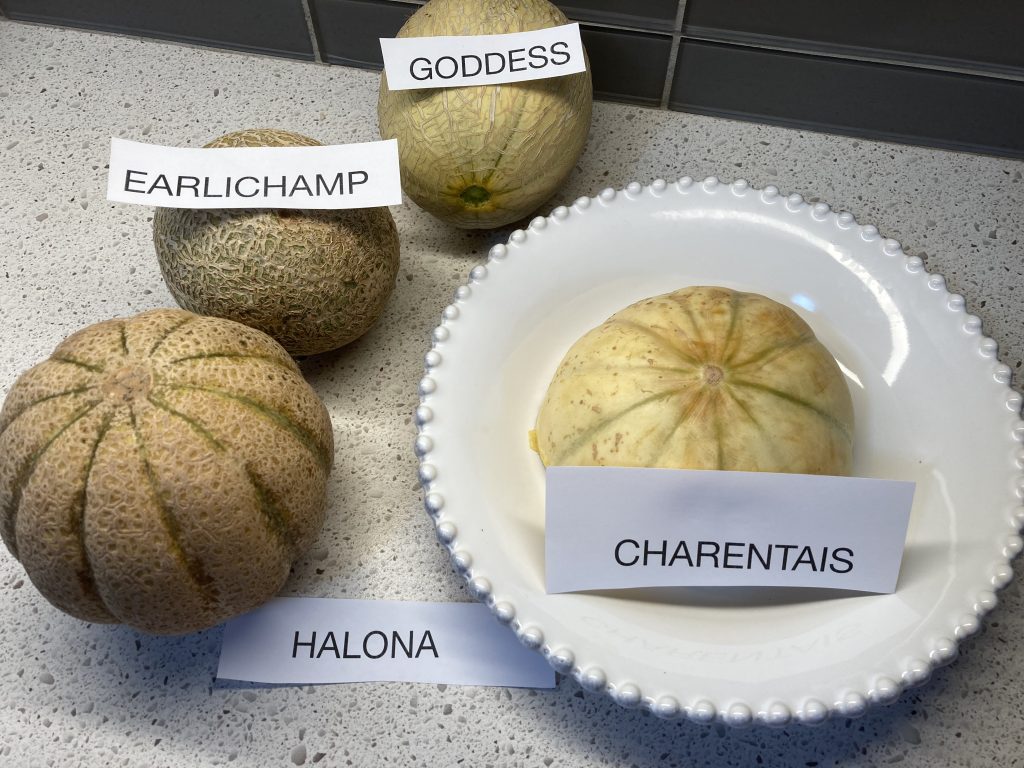 Melons picked for the taste test I did this week are all showing yellow on their skin. This is another clue that a melon is ripe.[/caption]
Melons picked for the taste test I did this week are all showing yellow on their skin. This is another clue that a melon is ripe.[/caption]
Clue #1 If cantaloupes have to be tugged hard and yet will not give way from plant they are not ripe. One reference said they will easily slip off the plant once ripe. I wasn’t sure how to define the word “easy” or “slip” so I tugged a few, twisted a few green stems and then cut one off the plant.
The fruits were huge and I had already heard that the commercial farmers in Alberta were harvesting their crop so I thought my melons must certainly be ready on Vancouver Island. Not true. Size is no indication of ripeness. It has to be so loose that it falls off the plant as you try to pick it. This is what easy means. It will literally fall off the plant as you pick it up. If it is ripe.
“Lovely. Not too soft and not too hard”
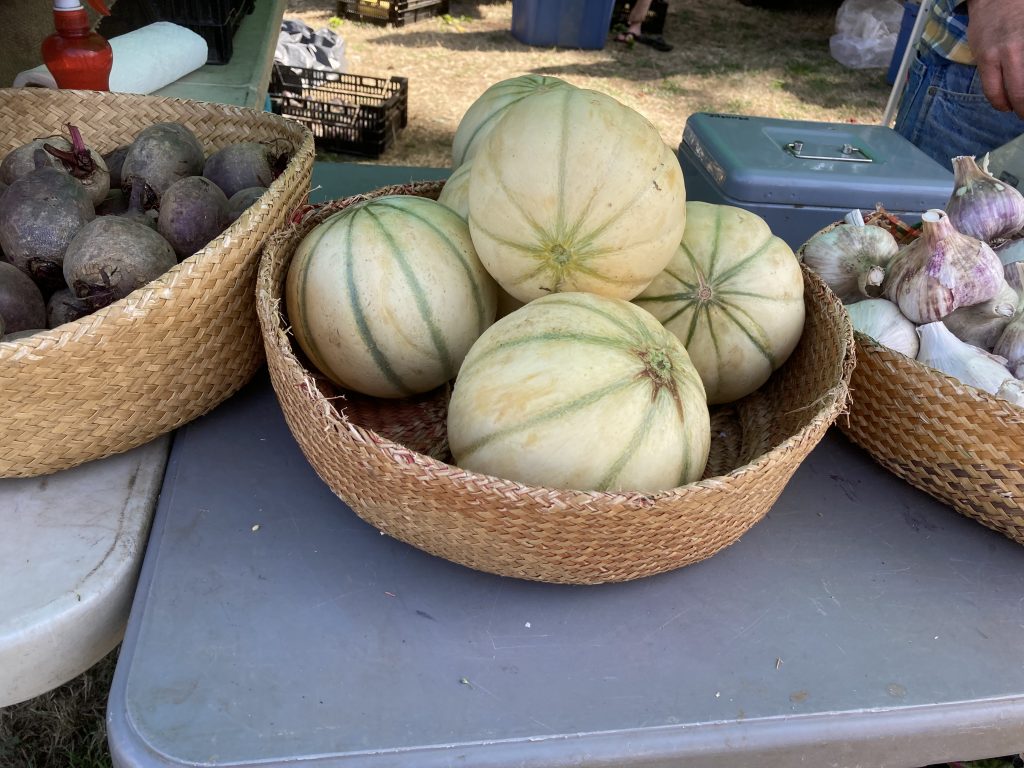 This bowl of Charentais melons at the Cedar market is fully ripe and smells beautiful. I paid $7 for one melon for my taste tests because my Charentais (named for the Charent melon-growing region in France) are still small, green and unripe. And it’s the last day of August as I check them again so who knows if I’ll get to try mine.
This bowl of Charentais melons at the Cedar market is fully ripe and smells beautiful. I paid $7 for one melon for my taste tests because my Charentais (named for the Charent melon-growing region in France) are still small, green and unripe. And it’s the last day of August as I check them again so who knows if I’ll get to try mine.
Clue #2 The melons smell musky. Yes this is a thing and it is why the correct name for Cantaloupes is muskmelon. I know this from school of course but was reminded of it again this weekend at the market when I was asking about Cantaloupes for sale. “They are muskmelons,” the farmer corrected me.
 This melon smelled fabulous when I bought it at the market because mine were not ripe enough for the taste test. It was also extremely juicy and rated by the panel as the second sweetest of all the melons tested. ” Lovely- not too soft, not too hard,” said one taster.[/caption]
This melon smelled fabulous when I bought it at the market because mine were not ripe enough for the taste test. It was also extremely juicy and rated by the panel as the second sweetest of all the melons tested. ” Lovely- not too soft, not too hard,” said one taster.[/caption]
What musky means is they do not smell green. I pick up my melons almost daily to sniff them because I remember the sweet, almost cloying smell from past years. Only yesterday morning did I smell the first truly sweet melon. It was so sweet and so lovely. But the final clue gave it away.
 Typically the only melon I grow is Earlichamp because it is so early. In the taste tests it rated low in flavour compared to the Halona and Chanterais varieties but as a group we decided it would be great wrapped in Prosciutto because of its bland taste. Goddess was the only one rated lower for flavour, but it was the first of all to ripen, so if you are in a shorter season you might want to try Goddess.[/caption]
Typically the only melon I grow is Earlichamp because it is so early. In the taste tests it rated low in flavour compared to the Halona and Chanterais varieties but as a group we decided it would be great wrapped in Prosciutto because of its bland taste. Goddess was the only one rated lower for flavour, but it was the first of all to ripen, so if you are in a shorter season you might want to try Goddess.[/caption]
Clue #3 A ripe cantaloupe, okay muskmelon, is a yellow melon. When it is mainly green and has brown netting over the fruit, it is not ripe. When the back-ground between the netting is yellow, the fruit smells sweet and it slips easily from the plant it is a ripe melon. Finally you can pick it and share it with friends.
Clue #4 When you cut a ripe melon, the inside of the skin is pale green or yellow, not bright green like this one in the photo below.
 This Earlichamp melon is almost ready but the inner edge of the skin is still a bit too green. We gobbled it down anyway because it is still so much better than anything else we have tasted from a store. It will definitely be sweeter in later fruits when the green is mostly gone.
This Earlichamp melon is almost ready but the inner edge of the skin is still a bit too green. We gobbled it down anyway because it is still so much better than anything else we have tasted from a store. It will definitely be sweeter in later fruits when the green is mostly gone.
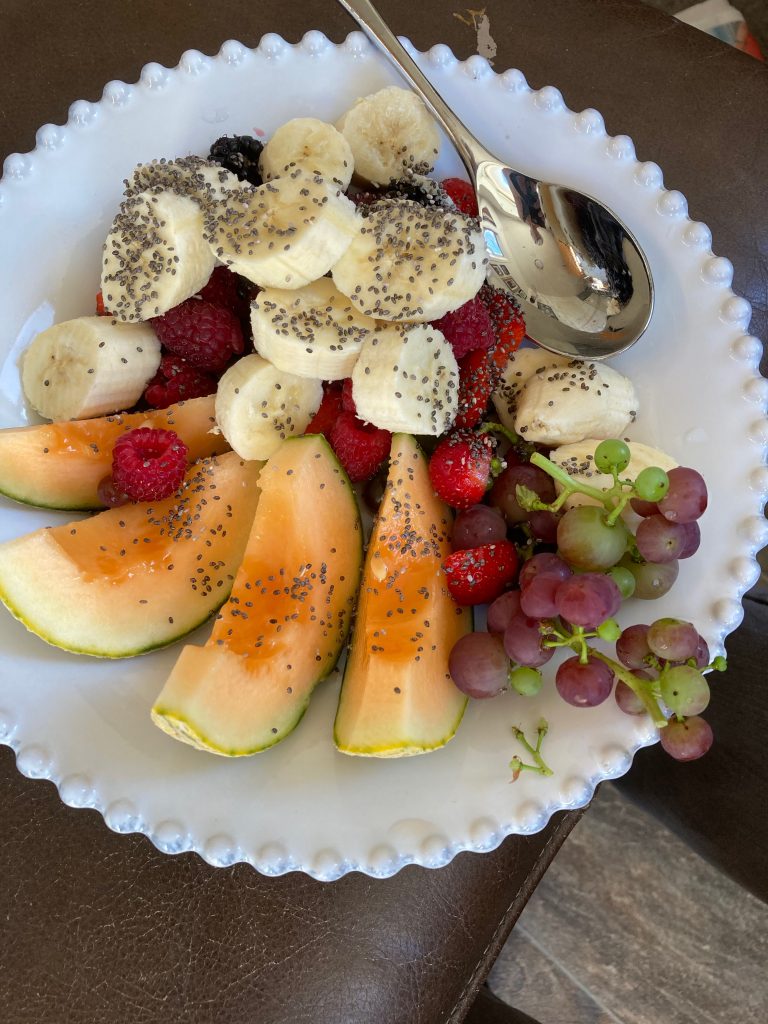 This fruit bowl has slices of a ripe Goddess cantaloupe from my garden. Notice how the inner rind is yellow, not green. It is fully ripe and delicious. The grapes and other fruit – except the bananas – are also from my garden. I am also trying to grow Chia seeds (the black dots on this image) but so far no flowers or seeds on the plants I sowed.
This fruit bowl has slices of a ripe Goddess cantaloupe from my garden. Notice how the inner rind is yellow, not green. It is fully ripe and delicious. The grapes and other fruit – except the bananas – are also from my garden. I am also trying to grow Chia seeds (the black dots on this image) but so far no flowers or seeds on the plants I sowed.
This year I grew four kinds of cantaloupes but only two are ready to eat at this writing so I bought two ripe ones (Charentais and Halona) at a farmer’s market. The two I grew – Earlichamp and Goddess (the medal winner!) are in my garden in root pouches. I also have Escorial, an early supposedly improved version of Charentais but they are nowhere near ripe. The fruits are hard and green and may not ripen this season. (September 8 update: Escorial is finally ripe and delicious.)
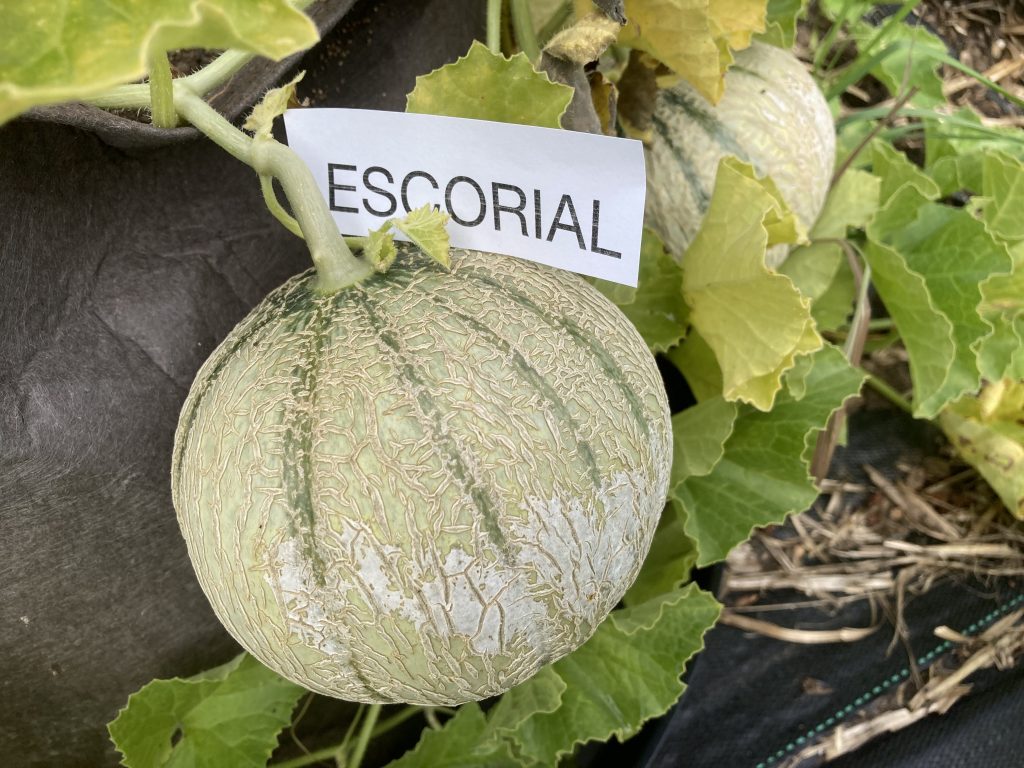 Waiting for the new improved Charentais melon to ripen is worse than watching a kettle boil. I have been saying it will be ripe for three weeks but it is still green and stuck to the stem. It could be a couple more weeks but only if we get hot weather – which is the real secret to ripening cantaloupes.[/caption]
Waiting for the new improved Charentais melon to ripen is worse than watching a kettle boil. I have been saying it will be ripe for three weeks but it is still green and stuck to the stem. It could be a couple more weeks but only if we get hot weather – which is the real secret to ripening cantaloupes.[/caption]
Tips for Growing Melons
#1 Start seeds in individual 4″ (9cm) pots in my greenhouse 2-3 weeks before planting outside. They are heat loving plants so they need to be seeded mid-late May in most of Canada but they can be started earlier on Vancouver Island.
 Cantaloupe seeds are started in pots under cover in my greenhouse on April 28, 2020 in my greenhouse[/caption]
Cantaloupe seeds are started in pots under cover in my greenhouse on April 28, 2020 in my greenhouse[/caption]
#2 Plant pots outdoors without disturbing the roots once weather is warm in a full sun location with a warm backdrop. (I have an almost full-sun spot and am growing them in raised root pouches on a black landscape fabric for heat.) Maybe I should have grown them in my greenhouse in bags for longer first?
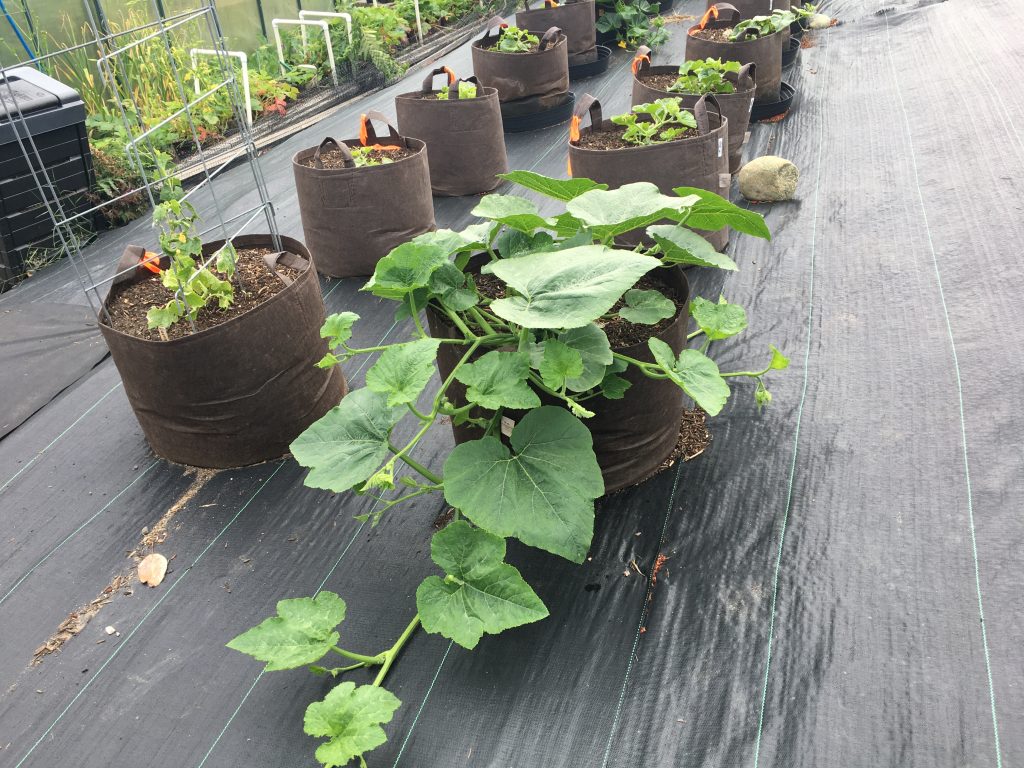 Pumpkins and cantaloupes are planted in root pouches – because these raised beds – placed on top of landscape fabric in full sun on May 15, 2020 – will heat up more than plants in the ground.[/caption]
Pumpkins and cantaloupes are planted in root pouches – because these raised beds – placed on top of landscape fabric in full sun on May 15, 2020 – will heat up more than plants in the ground.[/caption]
#3 Supply rich soil and regular fertilizer. I used newly purchased soil but it didn’t have enough nutrients and I didn’t start to fertilizing until August. This is a mistake. Next year i will start fertilizing right away as soon as I place transplants outside.
#4 Keep a steady water supply so these mostly water-filled fruits can achieve their maximum size and the plants will stay healthy. In other words don’t rely on me or my hand watering. Set up an automatic system so they are watered in the morning most days.
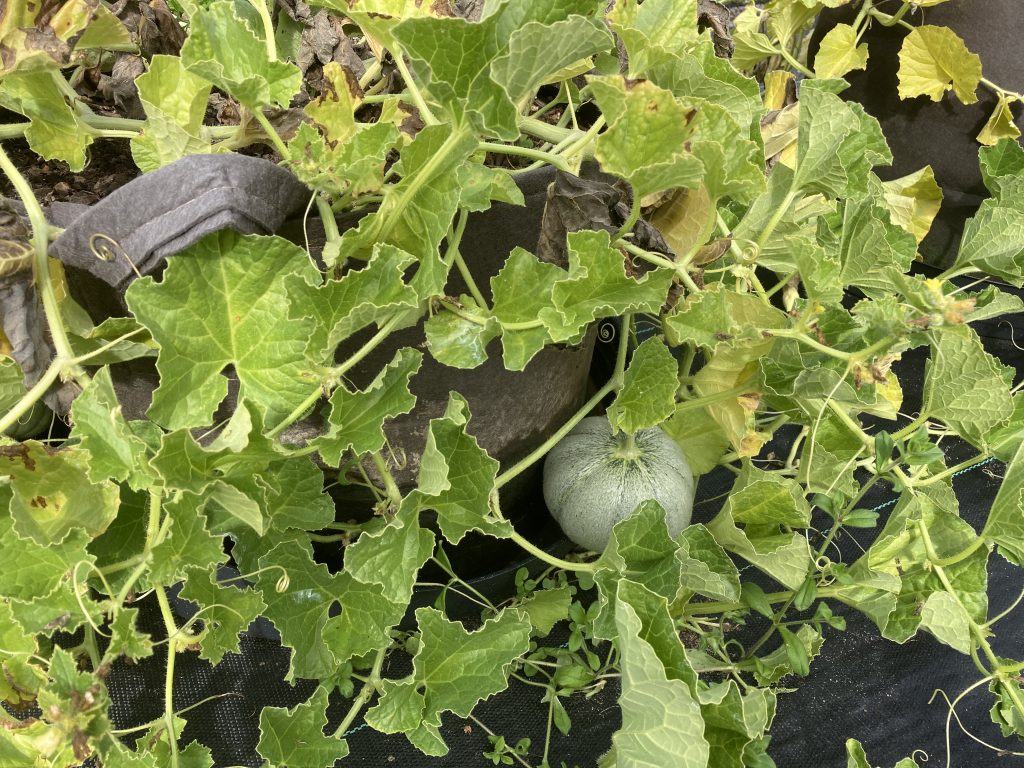 At the end of August, 105 days after planting outside, the Charentais cantaloupe in my grow bags is still hard and green so I had to buy some at the market from a warmer area to get a melon for my taste test.[/caption]
At the end of August, 105 days after planting outside, the Charentais cantaloupe in my grow bags is still hard and green so I had to buy some at the market from a warmer area to get a melon for my taste test.[/caption]
#5 Review catalogues carefully – the fully ripe fruiting dates will vary but the catalogues give a hint. In the William Dam catalogue Earlichamp is listed as 65 days, Goddess is 66 days and Halona (the winner in my taste tests) was 68 days. In the West Coast Seed catalogue Earlichamp is listed as 72 days and Halona as 75 days. In the Johnny’s seed catalogue Escorial is listed as a Charentais-type and it is 72 days. In my garden it was ready to eat about 19 weeks or 133 days after seeding or 112 days after setting outside.
” [Halona is medium soft and juicy. * #1 in flavour. Fine textured and juicy with nicely indented ribs… 5/5.”
By the end of August (109 days after planting outside) I have eaten some of the cantaloupes including Goddess and Earlichamp but others are still coming. Cantaloupes are fun to grow but it is frustrating to grow heat-loving plants like these unless you have the perfect spot. I do it for the taste.
A truly ripe melon is super sweet and juicy and really something money can’t buy unless you are lucky and go to a market at just the right time in late August or early September. I paid $4 for the Halona melon I bought and $7 for the ripe Charentais. The cost of seeds alone was $3.95 to $6.55 depending on variety and supplier so this makes a ripe melon seem cheap by comparison.
There is no easy answer but I am planning to grow muskmelons (aka cantaloupes) again next year just for the challenge of it! But spoiler alert I’ll plant the small pots into the root pouches inside my greenhouse earlier and move them out when they are larger and more ready to fruit- probably early June.
- Notes from the taste tests on Aug 31, 2020
What Would Donna Do?
Get my growing and gardening tips and pointers throughout the season.





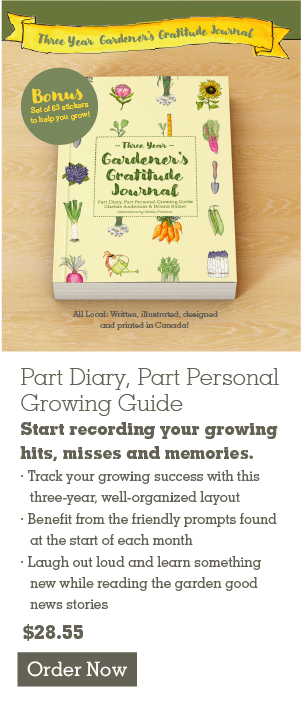





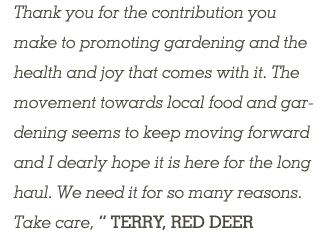

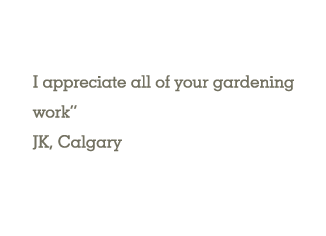

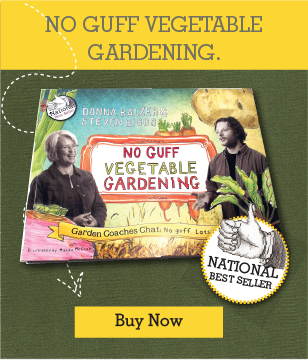
0 Comments